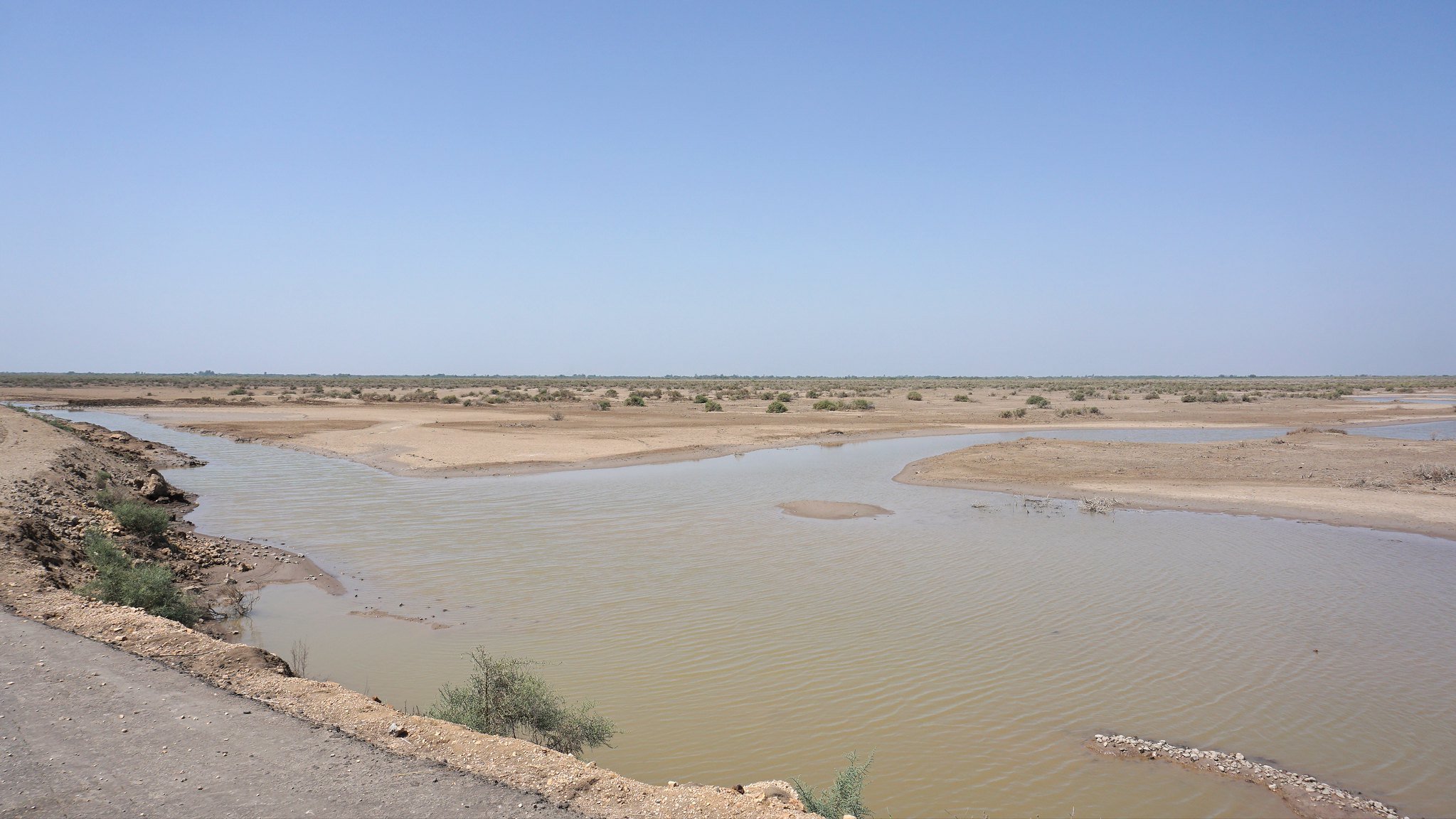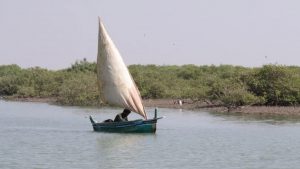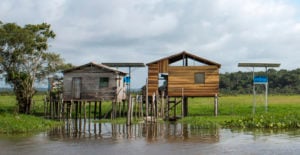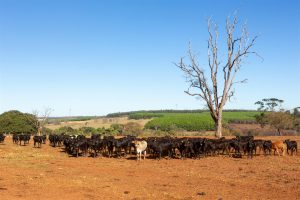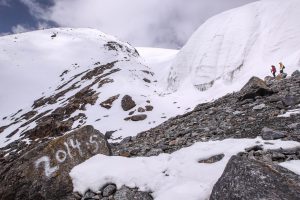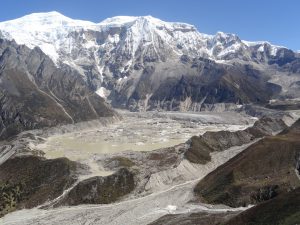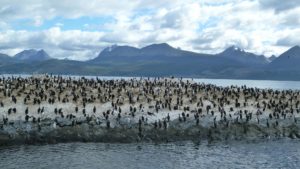With the Indus delta in Pakistan’s Sindh province fast drying up, a doomsday scenario looms for communities dependent on it for survival. Drinking water is already scarce for villages in the active delta and reductions in sediment deposits have allowed for greater sea intrusion. Not only is the parched delta adversely affecting the population, it will is also sounding the alarm for the future of the vast mangroves, birds and fish along the river.
As these factors hang like a persistent threat to communities and force them to contemplate migrating to cities, Pakistan’s Water and Power Development Authority (WAPDA) claims to have found a solution that will fix both the problems of water shortage and sea intrusion. The latter has become so serious that saline water has intruded 55 kilometres inland over the last seven months.
A new barrage in the pipeline
The idea is to construct a water reservoir on the Indus river near Thatta, approximately 45 kilometres upstream of its outfall into the sea. Entitled the ‘Sindh Barrage’, the project is being hailed by WAPDA as one that will dramatically improve the situation not only in nearby villages but also for the densely populated and water-starved city of Karachi.
The project has received the approval of Pakistan’s Prime Minister Imran Khan and construction is scheduled for a two-year period starting December 2022. In the meanwhile, WAPDA will conduct a feasibility study, engage international consultants to vet the proposal and complete the detailed designs for engineering.
In a video presentation, WAPDA Chairman Lieutenant General (retired) Muzammil Hussain described the project as “phenomenal”.
“Based on our conceptual study, this [barrage] can overcome both menaces,” Hussain said. “There will be a simultaneous paradigm shift. [The idea is that] it will translate to a new era of development in Sindh. The end of sea intrusion will have a profound effect on the mangroves and sea life.”
He vows that the project will bring a 25% return on investment and that the cost can be recovered in four years. International donor agencies will be approached for funds for construction, he added.
Authorities say the objective of the barrage construction is threefold: water storage of 2-3 million acre feet (2,467-3,700 cubic metres); flood mitigation for the surrounding 75,000 acres (303.5 square kilometres) of land; and 1,000 million gallons per day (4.5 million cubic metres per day) supply to Karachi and other towns.
Decision without debate
The Sindh provincial government has also agreed to the proposal, but without any consultation with stakeholders or debate in the legislative assembly.
Sindh’s Minister for Agriculture, Muhammad Ismail Rahoo, who is an assembly member from the district of Badin that is threatened by encroaching sea water, said he was not called on for the WAPDA briefing to the chief minister of the province. “They might have called irrigation officials,” he said.
Senator Sassui Palejo, a stakeholder from Thatta district and member of a Senate committee on water, also said she was kept uninformed. “They did not call us in the meeting. We are the stakeholders, [yet] we have no details,” she said.
Fears for the environment
Experts fear that the project will result in increased water logging in the surrounding lands and have a negative impact on the livelihood of communities that depend on riverbed agriculture. They also question the availability of water to meet the needs of the proposal.
Idrees Rajput, a water expert who has previously served as the secretary of irrigation in Sindh, said the losses outweigh the benefits of such a structure. “Water will stay in the river bed from Kotri to the Sindh barrage. People will not be able to cultivate the land. Forests, too, will be damaged. Overall, this project does not seem feasible,” he said.
Meer Mohammad Parhiyar, a former secretary to the provincial government, expressed concerns about the effects of such a structure on organisms living at the junction of the sweet and salt water estuary.
Parhiyar fears that the barrage will result in increased water logging and that silt would still remain in the riverbed. Instead of becoming fertile, he argued, the land of Thatta and Badin districts would become infertile.
“Instead of spending PKR 125 billion (USD 803 million) on this project, if WAPDA spent even half of it in lining the Kotri Barrage canals, not a single acre of land in Thatta, Sujawal and Badin districts will be out of cultivation,” he said. The barrage at Kotri was constructed about 60 years ago between Jamshoro and Hyderabad. Losses of water there have been reported at up to 56,000 cusecs. In 2016, Pakistan’s accountability bureau arrested two individuals in connection with the embezzlement of billions of rupees which were allocated to line Kotri Barrage.
Parhiyar quoted from a past report of the total committee on water resources, which notes that constructing the Tarbela dam on the Indus river has significantly reduced the discharge of water downstream. Data collected from the dam over a period of 28 years revealed that even in the high flood period, which was just seven years, the discharge downstream has been just above 50% of the allocated 10 million acre feet (maf). In the remaining years, when the water flow was low, the water
discharge was a mere 0.5 maf. In some years, low discharge resulted in the closure of electricity generation units.
Tahir Qureshi, a senior advisor on coastal ecosystems for the International Union for Conservation of Nature (IUCN), said the barrage would only be useful in the flooding seasons.
“For 10 months of the year, water does not flow downstream Kotri by up to 15 kilometres,” he said.
He said the barrage would be a waste of money unless the availability of water downstream Kotri was not assured. “It would be a blunder on the part of the government. Mangroves, fisheries and marine life would all be adversely affected.”
Altaf Ali Siyal from Sindh’s Mehran University of Engineering and Technology predicted that silting in the riverbed would mean the end of marine life. “Palla fish (a commonly caught fish that travels upstream in the river) is already in danger. [If the barrage is constructed], we will only see the palla in textbooks.”
